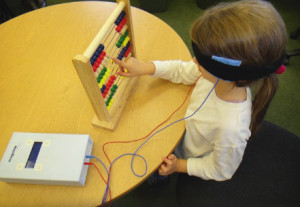
BY: SOPHIA VOUMVAKIS
We know that every brain injury is different – which is why aspects of brain injury, such as prognosis and treatment, can be so complicated – if every brain injury is unique, how we find effective ways to treat each individual?
Now, promising research suggests that a deeper understanding of interconnected brain networks may lead to personalized treatments for brain injury.
In a previous post, we discussed how a greater understanding of interconnected brain networks may one day be used as a diagnostic tool for brain injury. As discussed, these networks allow for communication across long distances in the brain. They enable us to direct our attention to important information in our internal and external environments, allowing us to plan and problem solve.
The brain’s natural response to injury includes the activation of cell repair mechanisms to reduce edema (the build-up of fluid in the brain) and inflammation. As the brain heals, it modifies previously existing intrinsic connectivity networks (ICN), forming new connections.
Recent evidence from cognitive neuroscience suggests that noninvasive brain stimulation techniques help these networks recover following TBI. One of these techniques, transcranial direct-current brain stimulation (tDCS) involves the application of a weak electrical DC current to the scalp to control the excitability of ICNs. Research suggests this treatment helps the network regions prepare for, and respond optimally to, cognitive rehabilitation.
Relatively brief periods of tDCS (30 min) have been found to enhance learning in a variety of perceptual, cognitive and motor tasks. The research suggests that tDCS triggers learning by enhancing attention to critical stimuli and events within new tasks, helping patients learn new things faster and better.
tDCS is usually well tolerated by patients, and is minimally invasive to the point that it does not interupt rehab activities, as the above picture demonstrates. Currently, however, its potential in TBI treatment is limited by poor control over the location of the stimulation. New high definition t-DCS may be able to overcome this limitation, using specialized HD electrode arrays.
Modeling studies have shown that HD electrodes can generate a higher intensity on cortical targets as compared to conventional sponge electrodes. Once the precise target is established, computational models are used to maximize the intensity of the stimulation on a precise target.
The benefit of maximizing intensity on a target, such as a damaged ICN, could lead to benefits such as increased attention span in people living with brain injury.
The focus of current research is to identify the ICNs that are altered by TBI, and then to determine how these networks react to the HD-tDCS treatment.
Eventually, this could lead to a personalized treatment approach for TBI that examines network diagnostics along with biomarkers of the traits (such as a person’s health status, nutrition, genetics, etc.) and states of the patient (such as their sleep quality and energy level) in an effort to optimize clinical therapy.
Excerpted from Current Opinion in Behavioral Sciences 2015, 4:92–102 A themed issue on Cognitive enhancement, Edited by Barbara Sahakian and Arthur Kramer, 2015 Elsevier Ltd.
Since acquiring her traumatic brain injury in 2011, Sophia has educated herself about TBI. She is interested in making research accessible to other survivors.
Filed under: Research Tagged: brain stimulation, interconnected brain networks, Transcranial direct-current brain stimulation (tDCS)
![]()






